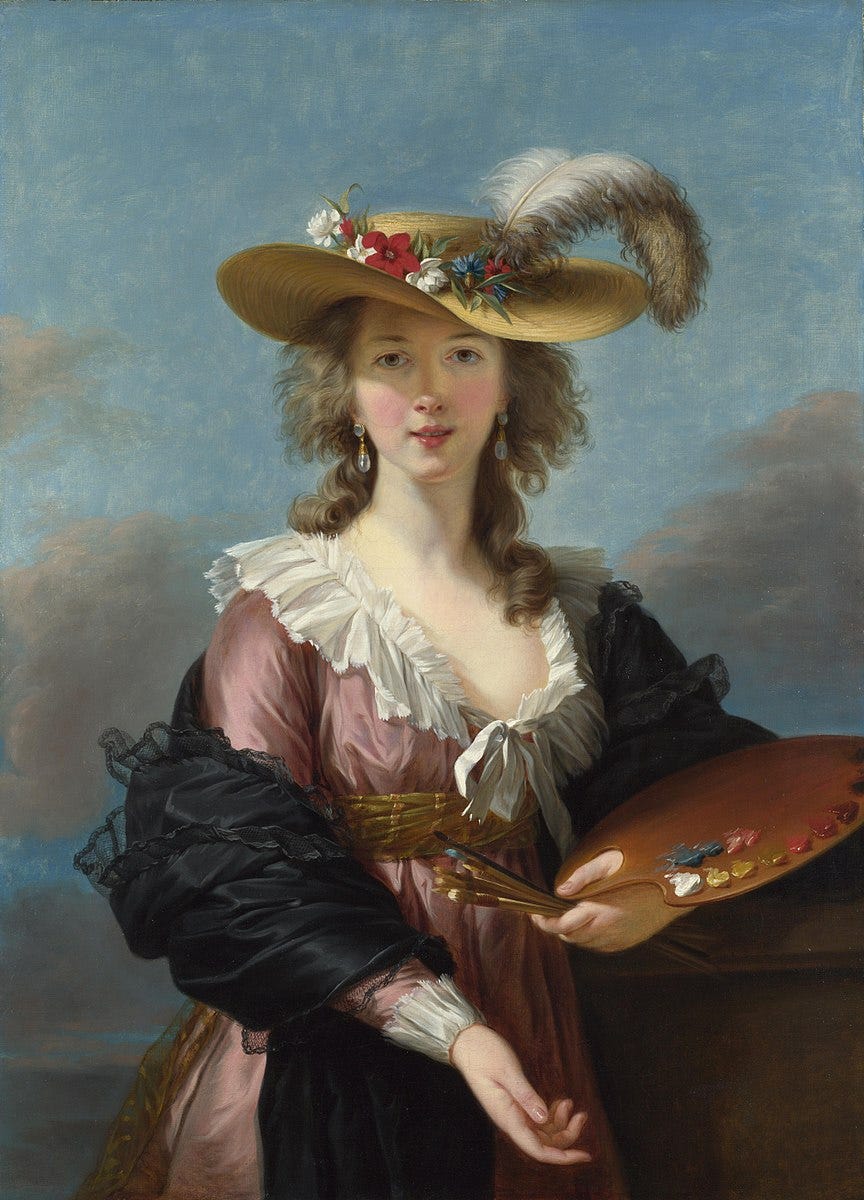Through Her Eyes
Élisabeth Vigée Le Brun was the favorite portrait artist of Marie Antoinette. With her brush, she captured the court of Versailles, and later, the courts of Europe.

Over the holidays, I had the chance to visit the Huntington Library, an extensive botanical garden, library, and art museum in Los Angeles. It was once the home of the Huntington family, who built their fortunes in the railroad industry during the Gilded Age. Henry and Arabella Huntington were avid collectors, and they had a particular fondness for 18th-century French art.
When one thinks of the most exciting artistic movements throughout history, even this art lover will admit that portraits of courtiers from the 1700s are not usually at the top of the list. Most people come to the Huntington to see its glorious gardens and collection of rare books and manuscripts, including its Gutenberg Bible.
That day, I entered the museum with the goal of seeing the Raqib Shaw exhibit (which my partner and I had already seen in Nashville, and we were eager to drag my family to see it, as well). But in the main h…


